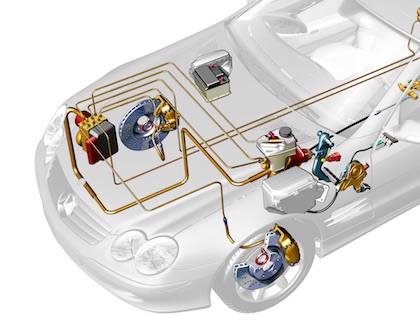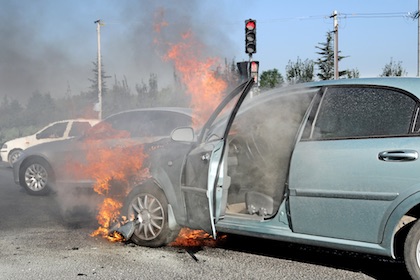I would estimate that one out every four vehicles on the road that are five years are older have the Anti-Lock Braking System (ABS) light illuminated. It could be a bad wheel speed sensor, hydraulic control unit or brake pedal sensor causing the fault. Faulty ABS systems are a huge safety problem ignored by regulators worldwide.
Some people take it to a shop for inspection. After hearing the cost to turn off the ABS light, decline the repair because it has not caused them a breakdown or a significant change to everyday vehicle performance. But, they do not realize that ABS brakes can save lives, even if they drive within the speed limits and obey traffic laws. Some drivers even put a piece of black tape over the light.

ABS is a system that is continuously operating in the background. It is looking at the speed of the wheels, vehicle dynamics and brake pedal position. This information can reduce stopping distances and allow the driver to remain under control during panic braking.
When the ABS has a fault caused by a sensor or defective component, it goes into a fail-safe mode and deactivates. The brakes still work, but all ABS and even stability control corrections and assistance are not active. Most drivers only discover this during the moments when they need the system the most. In these panic situations, they realize that they should have had the system fixed when they had the chance.

Police, accident investigators and insurance companies can determine if the ABS or stability control system was functional during the time of an accident. ABS systems can set malfunction codes in the memory of the ABS control module. These can be retrieved with a simple scan tool. Some ABS systems will even log the number of key cycles the code has been on, and other systems will capture data from when the code was set. New vehicles with accident data recorders will record if the ABS was functional at the time of the accident.
Recently, a reckless driver caused a fatal crash in Tallahassee, Florida. The driver of a Dodge Charger swerved to avoid a vehicle in the next lane, he jumped the curb and fatally struck a woman pushing a baby stroller. The infant in the stroller was critically injured.
The police were able to retrieve the data from the accident record. The data said that the driver was driving at speeds near 100 mph seconds before the crash. They were also able to determine that the ABS and stability control were not engaged.
It is difficult to say if the ABS would have prevented the crash or at least reduced the severity. It is clear police are looking at all of the circumstances that led to the crash, including the condition of the ABS brakes.
If you are a technician, you need to make sure the ABS light is out on the dash. If the light is on, advise the customer. If you are a driver and the ABS light turns on, you need to realize that you are driving without one of the most critical safety systems that can do a better job of braking during a panic stop than you can. The consequences can range from your insurance company not paying your claim to a fatal crash.
